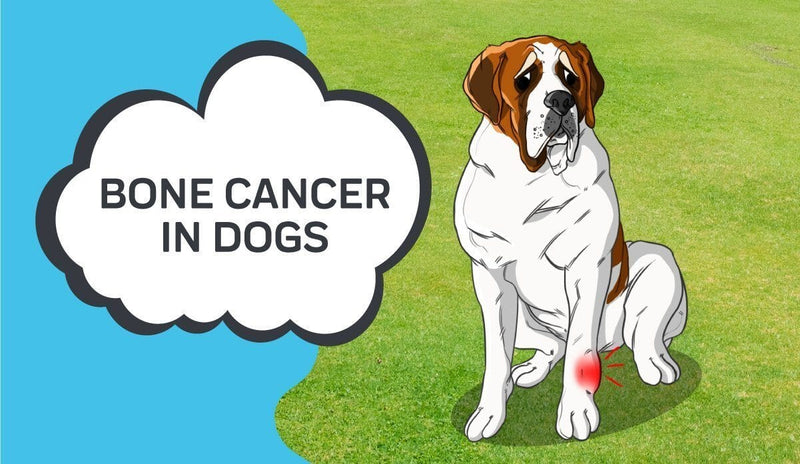Leukemia in Cats; Feline Leukemia Virus
![]() Reading Time:
Reading Time:
- What is Feline Leukemia Virus (FeLV) Infection?
- How Common Is It for Healthy Cats to Be Infected with FeLV?
- What Are the Symptoms of Feline Leukemia?
- How Leukemia is Diagnosed as an FeLV Infection
- How to Treat Leukemia in my Infected Cat
- What to Give Your Cat with Leukemia
Generally speaking, leukemia is a type of cancer that spreads by way of a virus. The type of leukemia that human beings are susceptible to getting is not the same as leukemia in cats, and the reason for this has everything to do with the type of virus involved. The virus that causes leukemia in cats is known as the feline leukemia virus, or FeLV.
Did you know that approximately two percent of all cats living in the United States are diagnosed with leukemia every year? Usually, cats that are already ill or malnourished are at a higher risk of having leukemia at some point in their lives.
However, don't let these statistics scare you into thinking leukemia is a terminal illness. Many cats make it out of treatment and go on to live a wonderful life in remission. Additionally, there's a vaccine to protect the cat's body against the virus as well, so you can take steps to avoid feline leukemia in the first place.
Let’s take a closer look at leukemia in cats. We’ll describe the FeLV infection in greater detail, and then we will focus on the symptoms of feline leukemia virus infection , diagnostic tests and treatment options!
What is Feline Leukemia Virus (FeLV) Infection?
Feline leukemia virus (FeLV) causes many health concerns for infected cats. We know that FelV is a virus that causes leukemia in cats, but, to clarify, the FeLV infection can only travel between and infect cats. Human beings and other pets or animals cannot contract the FeLV, so it's only a cat-specific virus.
Leukemia in infected cats is easily passed from one infected cat to a healthy feline friend. Take mutual grooming as a prime example! Natural gestures between cats can be as simple as this but as innocent and friendly as it is, even mutual grooming can lead to the transmission of FeLV to other cats.
Another example of an infected cat passing FeLV on to a healthy cat is by way of shared litter boxes. Sharing litter boxes increases the chances of FeLV transmission between cats. Not only that, but shared food dishes are also a potential point of transmission! If animal shelters have potentially infected cats, all the other healthy cats are at risk.
How Common Is It for Healthy Cats to Be Infected with FeLV?
Leukemia in cats is more common than you may realize. Unfortunately, it has a high death rate as well, with about eighty-five percent of infected cats passing away from leukemia in the span of an average of three years.
However, a diagnosis of leukemia in cats does not mean that an infected cat will pass away. Don’t lose hope immediately after a diagnosis of leukemia. FeLV Infected cats still stand a chance against the leukemia virus, and it all starts with cat owners being as proactive as possible!
Education is one of the best ways to combat leukemia in cats because when you are aware of the symptoms of FeLV, you can spot the signs sooner than later. And with all types of cancer, early detection is often the difference between life and death.
Even if your cat does not have a diagnosis of FeLV, there is one significant way of preventing your feline from developing leukemia. That one significant way is vaccinating your feline friend! There are a few vaccines available for infected cats with feline leukemia.
What Are the Symptoms of Feline Leukemia?
Symptoms of FeLV infected Cats include:
- Whitening of the gums
- Pale pink gums instead of red ones
- Yellowing in the white part of the eyes
- Signs of jaundice appearing in the mouth
- Swelling of your cat's lymph nodes
- Upper respiratory infections
- Trouble breathing normally
- Difficulty catching their breath after running
- Moderate to severe skin infections
- Open wounds that won't heal
- Problems with urination
- Bladder issues or infections
- Sudden rapid weight loss
- Disinterest in eating favorite food or snacks
- Total loss of appetite and hunger cues
- Hair falling out due to stress
- Change in the feel of their coat
- The lethargy that worsens over time
- Weakness in the bones
- Favoring certain legs over the others
- Fever or overheating
- Issues controlling bladder
- Changes in bowel movements
- Stomach ulcers
Cats with FeLV infection display an array of symptoms that, when spotted, can act as red flags indicating something is wrong within your cat’s immune system. First and foremost, leukemia in cats suppresses feline immunity, leaving cats in a dangerous circumstance.
A suppressed immune system means the cat is immunocompromised, which makes cats vulnerable to secondary infections. When immune systems are compromised, cats have a more challenging time fighting off bacteria and illnesses, proving to be fatal if not treated immediately.
On top of a suppressed immune system, bone marrow suppression is another symptom of leukemia in cats. Technically speaking, this form of leukemia causes bone marrow suppression. Still, suppressed bone marrow is recognized as a symptom of the virus because recognizing suppressed bone marrow can help the medical professionals treat your cat.
The vet can determine whether bone marrow suppression is at play by doing a full blood count. Since suppressed bone marrow is marked by a decrease in feline blood cells’ production, a complete blood count exam will shine a light on the situation. The vets will see the number of white blood cells and any blood disorders present in your cat.
Weight loss is an additional symptom of leukemia in cats. FeLV Infected cats start to feel physically ill as a side effect of leukemia, which leads to weight loss due to little to no appetite. Tumors and inflamed lymph nodes are common in cats with the leukemia virus as well.
Additionally, the lack of a healthy cat's immune system opens the floodgates for secondary infections and illnesses. Infected Cats with leukemia are more likely to catch other viruses or get sick from bacteria because FeLV weakens their bodies.
How Leukemia is Diagnosed as an FeLV Infection
A diagnosis of feline leukemia can only be given after specific tests are taken. One of the many tests that vets use to diagnose leukemia is ELISA, which stands for enzyme-linked immunosorbent assay. The ELISA test searches your cat's blood for traces of feline leukemia cells.
The ELISA diagnostic test is typically the first step taken when initially figuring out if a cat has the feline leukemia virus. It's simple enough to be conducted at your local vet's office, so special accommodations aren't necessary for the ELISA FeLV test. Like most tests, if cats test positive with the ELISA test, it means that your cat has the feline leukemia virus.
FeLV infected cats might also undergo the SNAP test. The SNAP test is another diagnostic tool for leukemia in cats. The SNAP test also looks for FIV, the feline immunodeficiency virus, and heartworm presence. Vets might look for bite wounds as well. When cats play, they might get a little too intense and accidentally create an entryway for viruses to infect another cat.
How to Treat Leukemia in my Infected Cat
Once it is proven that your cat is infected with FeLV, the next step is to seek appropriate treatment options for FeLV-positive cats. With an infection status of FeLV-positive, cats are usually treated for their symptoms right away.
Since FeLV is a virus, it’s impossible to kill its source, but antibiotics can help eliminate the bacterial infections stemming from FeLV. The goal is to alleviate your cat’s symptoms and make life as comfortable as possible.
What to Give Your Cat with Leukemia
Have you considered giving CBD to your cat with leukemia? Not everyone thinks of CBD, especially because vets often prescribe some kind of pain medication to treat symptoms caused by FeLV.
If you notice that your cat is exhibiting signs of physical pain, your instinct will be to administer the pain relief medication that your vet prescribed for your feline friend. As logical as it sounds, pain medications can actually do more harm than good.
A lot of pain medicines for cats are manufactured in a lab. Of course, they are designed for a particular purpose, and we are not implying that you can’t trust lab-made pain medications. There is simply a difference between artificial pain relief and natural pain relievers.
That being said, we encourage you always to make sure you reach out to your cat’s veterinarian or another trained professional before giving anything to your pet, even if it’s an all-natural substance. It’s essential to consult with someone who knows all the details of your pet’s situation.
CBD cannot cure leukemia in our feline friends, nor can it promise to protect your cat from cancer. CBD simply offers a wide array of health benefits that can make a positive difference for cats battling leukemia, including…
- A decrease in stress levels
- Lower levels of anxiety and depression
- Relieves stomach aches caused by not eating
- Nausea from chemotherapy treatments
- Minimize inflammation and soreness
- Relieves pain and relaxes tense muscles
- Soothes racing thoughts and nervous minds
There are many other health-related benefits associated with cannabidiol oil for cats. But please remember that even though CBD can be a wonderful supplement for cats with leukemia, but there are exceptions to every rule, so keep that in mind.
If CBD for cats is something you’d like to pursue, take a look at everything Innovet Pet offers. Our most purchased cat CBD product is our . Our CBD is extracted from hemp plants, meaning it has no traces of THC.
Not only are our CBD products purely organic, but they are also as natural as CBD comes. CBD oil from Innovet will never contain pesticides, genetically-modified organisms, additives, preservatives, or anything else that is artificial.
In addition to CBD oil for cats, we also offer catnip spray infused with CBD, salmon oil that contains hemp, and a hemp extract protectant balm for pain. With such a wide variety of CBD products, you can choose the option that works best for your cat.
Some cats take well to CBD, and they swallow it without hesitation. The same goes for hemp salmon oil. Other cats are adverse to oils, which is why we also make the catnip CBD spray and a hemp protectant balm! Our goal is to make sure there’s a CBD product out there for every cat, and we hope you find what you’re looking for here at Innovet.


















